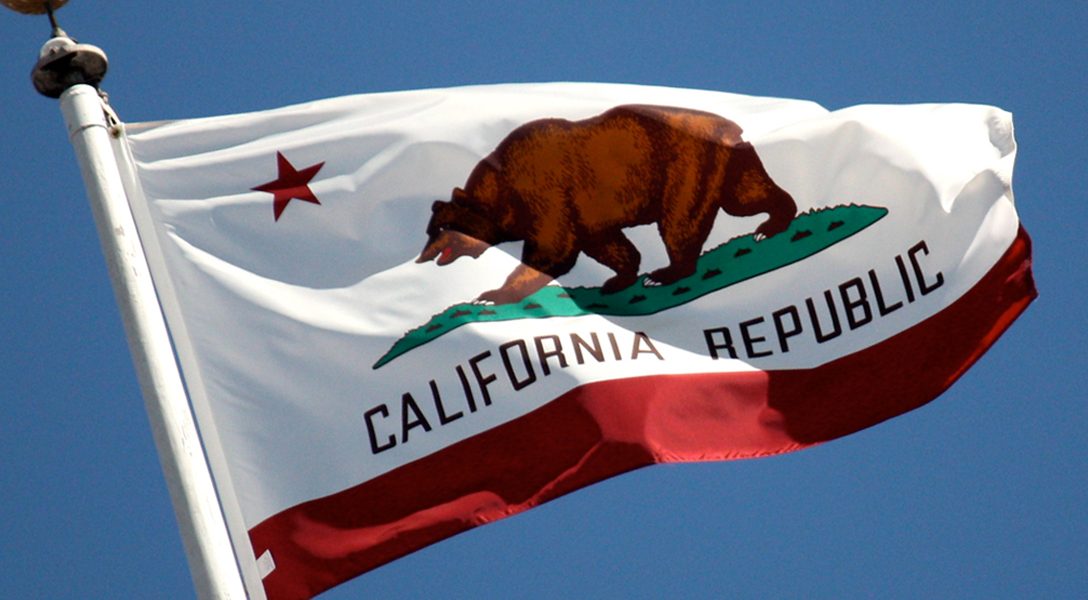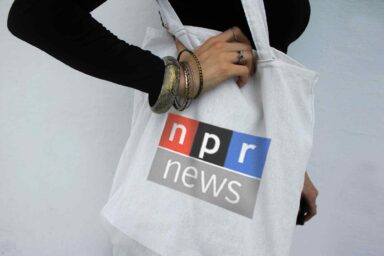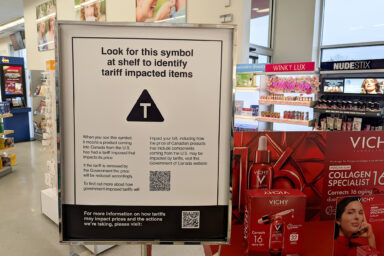Will a California Third Party Lead the Way to Break Partisan Gridlock?
Partisanship in Kavanaugh Spectacle Underlines Need for Some Middle Ground
The push for a third party in California might energize a rethink of the two-party system nationwide. Former congressman — and former Republican — Tom Campbell explains his support for that effort.
Is California ready for a “Bear Flag” party? Former Congressman Tom Campbell wants Californians to have more choice in statewide elections, and is pushing a plan to create a third party for the state.
In this conversation with Peter B. Collins, who has known Campbell for more than 25 years, the former lawmaker talks about the need for a new party and the benefits it would offer to voters and candidates.
The creation of a viable third party in California might also inspire a national movement to shake up the two-party system that now dominates US politics.
In recent years, California voters approved initiatives to end gerrymandering and limit the role of political parties in primary elections: An independent redistricting commission draws the lines for legislative and congressional districts, and the nonpartisan blanket primary — also known as the “jungle primary” or “top two primary”— has reduced the control of party leaders in selecting primary candidates.
Campbell served five terms in the House of Representatives, and was the last Republican elected from Silicon Valley since 1998. He twice ran for the US Senate, served in the state senate, and was finance director to Gov. Arnold Schwarzenegger. He is also a well-known academic who taught law at Stanford, served as dean of the business school at UC Berkeley, and presently teaches law and economics at Chapman University.
As a moderate Republican, Campbell lost to Sen. Dianne Feinstein (D) in the general election of 2000; in 2010 he lost the GOP Senate primary to Carly Fiorina. In 2016, he resigned from the Republican Party after it nominated Donald Trump. These combined experiences have led him to call for a new, third party in California.
Registered voters in California include about 8 million Democrats, 5.2 million Republicans, and 4.9 million who are tagged “No Party Preference” or NPP. Campbell wants to create a new party from the last group as well as the dominant two parties, and says the law allows a new party to be recognized if about 60,000 people statewide register for it. Campbell thinks he can achieve that number with a budget of about $100,000 to educate voters.
Click HERE to Download Mp3
Full Text Transcript:
As a service to our readers, we provide transcripts with our podcasts. We try to ensure that these transcripts do not include errors. However, due to time constraints, we are not always able to proofread them as closely as we would like. Should you spot any errors, we’d be grateful if you would notify us.
| Peter B. Collins: | Welcome to this Radio WhoWhatWhy Podcast. In San Francisco I’m Peter B. Collins. Here in California is there a demand for a new political party to take on the Democrats and the Republicans and offer the non-aligned a political home? Tom Campbell has served as a US representative. He did a total of five terms in the House representing Silicon Valley. He also served as a state senator here in California, finance director, and he is currently the Dean of the Fowler School of Law. I’m sorry, he was the Dean and he’s now Professor of Law at Fowler. That’s on the Chapman University campus in Southern California. And with an economics degree from the University of Chicago he continues to teach economics at the Argyros School of Business and Economics all on the Chapman campus. Tom Campbell, thanks for being with me today. |
| Tom Campbell: | Most happy to, thank you for having me. |
| Peter B. Collins: | And before we begin our discussion I should disclose to our listeners that I’ve known you for more than 25 years and I was proud to be a consultant on your campaign for the United States Senate when you challenged Senator Dianne Feinstein in 2000. And so I’ve been able to share conversations with you over many years. And last week you popped up in a blog post here in California from the CALmatters blog with a discussion about launching a new political party. And first let’s define where you’re coming from, Tom, because you served as a Republican in Congress described as a moderate. And then you ran for the United States Senate and were unable to defeat the sitting senator Dianne Feinstein. And you challenged George W. Bush even before he became president during your Senate campaign. You opposed his tax cuts. So you’re an interesting political figure who has not always toed the party line as a Republican. |
| Tom Campbell: | Well first of all thank you for your very kind introduction and it’s been a pleasure to know you all those years too and thanks again for your consultancy help when I was running in 2000. No, that’s right, I’ve been an independent in my approach to public service and I think that’s what really is required, not to put a party preference ahead of a good policy or embrace something you know to be less than good because the party wants it. That fit Silicon Valley quite well. I was the last Republican to represent Silicon Valley and the movement of the Republican Party since then has been in two dimensions that is I think not very helpful to our country. One is moving more on the social conservative side and then the other is becoming a wholly run subsidiary of President Donald Trump. Even though that might break with traditional Republican principles on a number of important points such as welcoming immigrants, free trade, respect for the rule of law, and respect for a free press. |
| On the Democratic side I grew up in a Democratic family in the city of Chicago. My father was a federal judge appointed by Franklin Roosevelt. So I had a substantial knowledge of and respect for the Democratic Party. But growing up in the city of Chicago I felt the abuses of a big city machine. And so I come at both of the established parties with a fair degree of skepticism. | |
| Peter B. Collins: | And Tom, just to explain to listeners, I grew up in a Democratic family. I went to Chicago, attended Northwestern and worked in radio there. I had the same reaction to the Democratic machine there and it really opened my eyes to the extremes that long-term political machines or movements, they can atrophy and they become corrupt and out of touch with the people they are supposed to represent. And I myself abandoned the Democratic Party in the 1990s and you had a role in that. I recall you sending me a form to change my registration so I could vote for you in the primary that year. That was before we shifted the California laws related to the open primary and the top two primary which we’ll discuss here in short order. But my point is that you and I have quite a bit in common. That we are independent thinkers who support a party when it is aligning with our values or our policy preferences but we’re not afraid to criticize that party. And you have left the Republican Party given the ascendance of Donald Trump, is that correct? |
| Tom Campbell: | It is. It was specifically after he had been nominated. I did not support him. I supported John Kasich in the Republican primary. And when candidate Donald Trump said that there was nothing we could do about President Hillary Clinton appointing justices to the Supreme Court unless the Second Amendment people, then he paused and at that point was my view crossing over the line, he was invoking the possibility of gun violence. I wrote a letter to the constituents of my former district and published it in the Mercury News, San Jose Mercury News, and called up the chairman of the Republican Party in California and asked the Republican Party to switch its nominee and if they did not do so then I was no longer comfortable in the Republican Party. |
| Peter B. Collins: | And so you and I are now nominally Independents but in the official voter registry run by the secretary of state we are designated with this odd acronym NPP which stands for No Party Preference and of course before that the name was DTS for Declined To State like it was a secret and we weren’t willing to divulge what our political orientation is. So we know that the parties, the Democrats and Republicans, only begrudgingly lost control of the primary process as I referenced. The top two system allows a Democrat to run against a Democrat as we’re seeing with Kevin de León, the state senate Democratic leader challenging Senator Feinstein in the November election this year. And this is one of the few things that I give your friend Arnold Schwarzenegger credit for, is the ballot measure that put in effect the redistricting commission that has effectively drawn the lines for California’s congressional and state legislative districts in ways that are open and transparent and can be carefully analyzed. And it’s not the backroom deal where the legislators got to pick their voters. So we’ve seen dramatic changes to open up the process but in doing so they locked out third parties and basically left the Greens and the Libertarians and the actual capital “I” Independents in the dirt. |
| Tom Campbell | It’s hard for any of those to make it to the top two. You’ve got a circumstance this time in California with the race for Insurance Commissioner which is an exception to that rule. Steve Poizner who had been Insurance Commissioner and a Republican withdrew from the Republican Party and was able to win the second spot or maybe even the first spot I think, it was the first in the top two primary. So this November there is a No Party Preference person, Steve Poizner, against a Democrat for Insurance Commissioner but otherwise your point’s well taken. But that plays into the question then why should I be pursuing a third party if they have no chance to make it to the finals. And that I think is a difficulty imposed by the top two. But in reality the third parties were not surviving anyway, they would have a candidate in November but the candidate would never win. Whether that’s Peace and Freedom, Green, or Libertarian. So what it does is to focus on the primary, the top two primary. |
| And I did a substantial amount of polling on the attractiveness of an independent candidate. And if an independent candidate makes it past the primary she or he is favored overwhelmingly against a Democrat or against a Republican. So the issue is getting past the top two primary into the finals without having to choose one of the two major parties. And if we were able to create a truly independent party that vehicle would be a way of doing it. I may be getting ahead a bit in the conversation but there’s a fluke in California that does not permit the name Independent to be used by a party except for the American Independent Party which was started in 1968 to assist George Wallace to run for president. They got on the ballot. They qualified in California and have kept that designation ever since. And the Secretary of State has said any other party using the name Independent runs into potential confusion and therefore cannot be listed to that name. | |
| Peter B. Collins: | So help me understand. Let’s say we call it the Bear Flag Party or the Golden Party. How does it work? Is it going to have a hierarchy like the Democrats and Republicans have today with conventions and committees and a chairperson or are you looking for something that’s a little more virtual and really simply a vehicle to create a more active center? |
| Tom Campbell: | Either. And it will depend on where the support is. Both would be improvements over the present system. So let me parse the two. Starting with the simpler approach. No Party Preference is a pejorative, it comes across as “Oh I just don’t care. They’re all the same to me.” Well they’re not. They’re quite different and quite unsatisfactory each in their own way. So the fact that the label for an Independent has to be No Party Preference is something that the two established parties don’t want to change in California. So a simple approach to all of this is to obtain 62,777 presently registered voters’ signatures informing the Secretary of State that they wish to join the Bear Flag Party instead. Under law the Secretary of State must then recognize the Bear Flag Party. The Bear Flag Party — to use that name for a moment longer — would then be available for any Independent who wanted to run in, let’s say, an assembly district where the candidates perhaps might be a supervisor or might be a city council member, might have some name recognition and not want to run as a Democrat or a Republican. They could avoid the scarlet letter and [BP 00:12:17] by running as a candidate for the Bear Flag. |
| And then what their views would be, what their support would come from would be idiosyncratic to each district. The end of that road is perhaps two, three members of the assembly who were Independent, they might be under the name Bear Flag and they would hold the balance of fiscal power. Because in California no fiscal statutes can become law, can pass the legislature without two-thirds vote of both the Assembly and the State Senate. So with the Democratic Party right now at the two-thirds point and in my view the Republican Party irretrievably tarnished with the identification with President Trump, only the Independents would have a shot at constraining single party rule. So that to me is the simplest. It requires only 62,777 people doing so and we could actually go to the half-a-million people who registered as American Independent Party in California. The Los Angeles Times, John Myers in particular, did a study two years ago, found that 75 percent of them thought they were registering Independent, didn’t realize they were registering for the party that was founded to help George Wallace. | |
| Peter B. Collins: | Now we have about almost 5 million California voters who currently wear the red letters NPP. Do you believe that most of them would be interested in affiliating with a nascent party like a Bear Flag Party or do you think that it is their intention to be free of affiliation with any political party? |
| Tom Campbell: | It’s a good observation, Peter, and I think the answer is there’s some of each. But all I need is 1.3 percent of them and I’ve got 62,777. So if among that just shy of 5 million people registered already, registered as NPP, if only 1.3 percent of them said I’d like to support a vehicle to get a candidate the opportunity to run without NPP we would have the numbers. But you might be right that the majority may well like not being affiliated with any party and thus might not be interested in helping with this third party but I repeat the percentage is exceptionally achievable. Give me just a little over 1 percent of them, we’ve done it. |
| Peter B. Collins: | Now professor, you’re the economist here. So if I may turn the discussion to political money, how would the new party operate? For example there are loopholes in the campaign finance laws in California that are widely used by both parties where money gets pumped into a county, say Democratic committee, and then they’ll make a contribution to an assembly campaign 300 miles away. And they are laundering money through these county committees. Some of it gets passed through the state party committees but fundamentally there are significant advantages to the established parties under the campaign finance regimes. |
| Tom Campbell: | So I’m thinking back to the model that we were speaking of, that first model which is the ‘thinned’ party. It wouldn’t have that advantage, it wouldn’t have the structure to take advantage of the loopholes which I think is the correct phrase in campaign finance law that allows the established parties to essentially raise and spend far above the limits that apply to individuals. But my model again is to get two or three members of the state legislature who would hold the balance of power and would probably identify and encourage candidacies where they would be self-funded. You’ve got for example running for Insurance Commissioner now, Steve Poizner, when he ran for governor put a substantial amount of his own money in. To his dismay Meg Whitman had put more and was able to beat him in that primary. So if my goal is to get two or three independent candidates they will probably be self-funded. But this would give them a vehicle without the NPP after their name. |
| If we wanted to go full scale replica of the two major parties then you’re quite right, it would be a much bigger undertaking. But let me get it started with 62,000 signatures. It’s exceptionally cheap. If you figure emails and the cost of communicating, the cost of locating them, might be a dollar each, let’s say it’s a dollar-half each, I’m coming in at under 100,000. Once the party is established then I think we can go in the more complex direction. I’m a centrist as you were kind enough to identify me before. I would believe that there would be an interest in having a center orientation in that party. But that might await a party structure and the drafting of a party platform. | |
| Peter B. Collins: | Now Tom, have you managed to game this out and calculate what would happen to your Bear Flag Party voters in a presidential primary? Because there was a lot of angst in 2016 when young people in particular, who decided late to vote and decided they wanted to vote for Senator Bernie Sanders. Many of them were very angry because they had not properly registered and when they went to the voting precinct they were given provisional ballots and many people believe those are never fully counted. So have you looked at how this would integrate with the presidential primary system? |
| Tom Campbell: | I have and you make a very fair point. So the top two primary does not apply to presidential campaign in California. They made that exception. So one has to be a registered Republican to vote in the Republican primary or in the Democratic primary a registered Democrat or not registered in any party. And the description of the situation that arose with Senator Sanders supporters was largely people who were registering for the first time. But in full candor I do think you’ve identified something I should take a minute and agree with you on. It’s a slight detriment. If you join the Bear Flag Party than the Democratic Party will not allow you to vote in their primary for president. And the Republican Party will not allow you to vote in their party primary for president. So because of the different treatment of the presidential race in California you would be excluded from the two major parties’ presidential candidates. |
| Peter B. Collins: | So Tom, you’ve been in cahoots with the last man who I recall who served in the state legislature as an independent. And that is Quentin Kopp of San Francisco. He’s a distinguished guy who served on the local level, then in the State Senate. He went on to serve as a superior court judge, he also was the first chair of the High Speed Rail Authority. And you and he have some sort of connection here in floating this idea of a new centrist and non-aligned party here in California. |
| Tom Campbell: | We do indeed. I had the honor to serve with Senator Quentin Kopp when we were both in the State Senate and admired him for many, many years. So I will disclose no secret to say that when we are ready to announce the party, Quentin Kopp and I will be in the ranks of those who are the founders. I have, but do not have permission to say, two Democratic former state legislators. One assembly member, one state senator who are always equally interested. So my goal would be when we are ready to do a formal announcement we would do it with a former Democrat, a former Republican and a former Independent. |
| Peter B. Collins: | And what process do you see going forward? What kind of validation are you looking for? Are you going to launch this online campaign to see if you can get 60,000 plus to re-register? What do you see as your likely plan? |
| Tom Campbell: | I see that as the exact next step but after the current election, so shortly after November. The first step is to obtain 62,777 signatures of people re-registering. We’ll need to raise the funds to do that but gratefully, as I explained, there’s not a huge amount needed to accomplish that. When that is done we will then create a platform and the articles of incorporation of the party the Secretary of State is obliged to recognize. And my goal there would be probably the beginning of next year, Peter, around January. I predict, I don’t think I’m going out on a limb here very much, that many moderate Republicans will be disappointed in the Republican Party’s inability to do well in the November elections. And I think some if not decently close to a plurality of Democrats will be unhappy with the schism within the Democratic Party; the Sanders versus Clinton, the newly activist far left of the Democratic Party against the institutional Democratic Party. But both of those phenomena, the Republican dissatisfaction and the Democratic schism will be manifest after the election, not before. So this came out a little bit earlier because of an article to which you made reference in CALmatters that I wrote to, to correct a failure to include the opportunity to create a third party and what was described as the difficulty of creating a third party. But that’s the step we’ll take and that’s when we’ll do it. |
| Peter B. Collins: | Now Tom you served with some distinction as the Dean of the Business School at UC Berkeley. So I’m wondering if you’ve recruited any of your former doctoral candidates to work on the branding here. Branding is essential in the digital age here and your working title of Bear Flag Party, it doesn’t jump. I haven’t had any focus groups but I’m not sure that millennials are going to respond to that. So can you get some input from people younger than us? |
| Tom Campbell: | Well that one I did figure out Peter and yes we are doing just that. There are some remarkably inexpensive online survey methodologies now available. So in the old days you’d have to hire one of the big advertising firms and they would charge you an arm and a leg to go do a consumer survey. We can now do that almost entirely online. And yes I have figured out that one out. The candidates include center party, ‘Bear Flag’ is Quentin Kopp’s preference. So I certainly want to mention that whenever I put the idea forward. The question of can we possibly use ‘Independent’ has been resolved by the Secretary of State saying no we can’t. ‘Peter B. Collins Fan Club’ would be another name. |
| Peter B. Collins: | I’m sorry to report that Oath is already taken. |
| Tom Campbell: | Oath Party? |
| Peter B. Collins: | No, Oath is the new brand for Yahoo. That’s the holding company… |
| Tom Campbell: | Oh I didn’t hear that. No, that’s news to me. |
| Peter B. Collins: | …that Verizon formed. And it’s a head scratcher. Every time … I work for Oath, it’s like “Oats?” |
| Tom Campbell: | I see. Okay, it’s not a breakfast cereal, I guess. I was thinking the None of the Above Party. I was told that that was too flippant. But there has actually been a success in several Canadian… they call them ridings rather than districts… of people running on the None of the Above Party label. So you’re right, this is not a question of principle, this is a question of marketing regarding the name. Platform is principal, the name I think we can be informed by some good marketing. |
| Peter B. Collins: | Well let’s disrupt Landor and all of these branding outfits and I am going to offer my email address and invite listeners of WhoWhatWhy and Peter B. Collins podcast to send us your suggestions. And you don’t have to live in California. If you have an idea for a real screaming name for a political party that you just heard Tom Campbell describe, send it to me. My email is peter@peterbcollins.com. And I’m going to filter them, Tom, and I’ll send the ones I like to you. |
| Tom Campbell: | Don’t, don’t, don’t. You’re going to be the Facebook, the Google of this process. |
| Peter B. Collins: | Yeah we got to make sure none of that lefty fake news gets through. |
| Tom Campbell: | Yes indeed. I’m so glad you identified that as one of the great crises facing our republic. |
| Peter B. Collins: | Well Tom, it’s a pleasure to talk with you. I’m sure listeners can tell I have great affection for you and the work that you’ve done over the years. And as somebody who is not aligned in a political party right now, I’m quite intrigued by this idea. I’m going to follow it. And like always if I decide to participate, I will. |
| Tom Campbell: | Marvelous. I’d love to have your help, Peter, and thank you for the opportunity to explain this to your listeners. |
| Peter B. Collins: | Tom Campbell here on Radio WhoWhatWhy. |
| Thanks for listening to this Radio WhoWhatWhy Podcast. Send me your comments, your reactions and your suggested names for a new political party. Once again, my email is peter@peterbcollins.com. And I urge you to do what you can to support the investigative journalism here at WhoWhatWhy.org. |
Related front page panorama photo credit: Adapted by WhoWhatWhy from donkey (Steven Braeger / Wikimedia – CC0 1.0) and elephant (Republican Party / Wikimedia).






